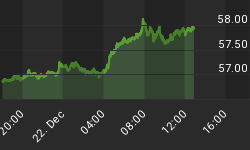The May 12th piece on Sunspots reviewed that Solar Cycle 23 which ended in January 2008 accomplished the weakest minimum in over a hundred years. At its maximum in 2012, Cycle 24 was weaker. The drop with the April posting was rapid and set a new low.
Solar minimums have been associated with declining temperatures.
These have been longer-term events.
On the nearer term, El Niños are associated with warming and the one that ended last year was a strong one.
The following chart places it in perspective.
El Niño Changing to La Niña
The opposite oscillation is called La Niñas and they have been associated with cooling.
This chart shows that the influence is declining quickly.

Wrap
Both the Solar Cycle and the La Nina indicate cooling trends that are independent of any putative influence from increasing concentrations of atmospheric carbon dioxide.
Benefits of Increasing CO2
That increasing concentrations of CO2 increases the temperature of the atmosphere and oceans has not been proven. On evidence over millions of years, changes in CO2 have followed those for the climate by some 400 to 800 years.
However, the record that increasing amounts of CO2 has been beneficial to life has been widely understood. Particularly since Priestley's work on gases in the 1770s.
One of the features of the Carboniferous Period was the extraordinary growth of plant life. It was driven by CO2 concentrations as high as 2500 parts per million. Today's commercial greenhouse operations use up to 1000 ppm CO2. Ontario's Ministry of Agriculture posts that the elevated level increases the rate of photosynthesis by some 50 percent over ambient concentrations.
Increasing ambient amounts of CO2 has prompted growth rates now detectable by satellite observation.
Benefits of Increasing Atmospheric CO2

- DNA explains how life manages itself.
- Photosynthesis is the means whereby energy from the sun is converted to feeding life.
- The following is the formula for photosynthesis:
The overall balanced equation is...
6CO2 + 6H2O ------> C6H12O6 + 6O2
Sunlight energy
Where: CO2 = carbon dioxide
H2O = water
Light energy is required
C6H12O6 = glucose
O2 = oxygen
















